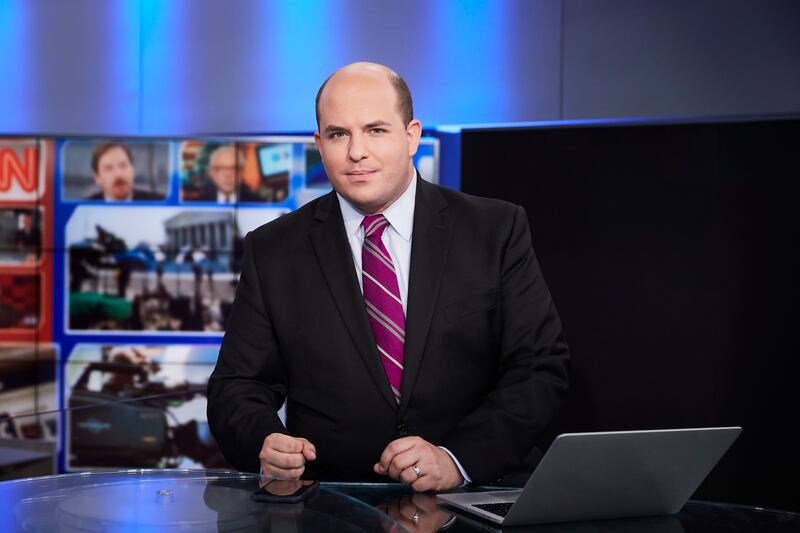Life is about to change — for Brian Stelter and the rest of the country. It’s March 15, and he sits at his desk awaiting the signal. Makeup cakes his clean-shaven face and high forehead, his dark hair neatly buzzed on the sides. What he intends to say on his show today, or at least the way he’ll say it, could draw criticism for somebody in such a secular calling. But he believes it’s right.
There’s a countdown. The cameras roll, lights shining in his eyes. He has done this plenty of times, but never in the glare of a pandemic. As a media critic, his job is to tell the story behind the stories, making sense of the tangle of facts, speculation, mistakes and untruths we call the news. But today, the first Sunday since the country closed down, and for the first time on his show, Brian quotes the Bible.
“Do to others what you would have them do to you,” he says, reading from Matthew 7:12.
“Love your neighbor as yourself,” he says, citing Leviticus 19:18.
Rushing across the airwaves, those words set the stage for a conversation about humanity in a time of distance. His normal role is to make sense of the noise, to sort through information, to figure out what is true and why. But today, he’s letting himself be a person calling for unity. “This is a very scary moment, many people are processing this in very serious ways,” he says. “And we are all in this together.”
“The great shutdown of 2020” has begun. And it’s about to get weirder. Over the next few months, more than 100,000 Americans will die from COVID-19. As many as 40 million Americans will lose their jobs. Months of quarantine will blend into curfew as protests against the shutdown give way to protests against the killing of George Floyd in police custody. All of these events will complicate the work of journalists, decimating already thinned reporting jobs and spawning open revolt about what stories merit publication.
That will give the media critic plenty of work, though it helps that in his mind all these stories are related and can all be addressed through the lens of press freedom, access and practice. “I think it just helps to keep my head on straight,” he says, “to find these connections between the stories.”
Today, he still has a few guests at the Manhattan studio of his show, CNN’s Reliable Sources, though they don’t shake hands. Others will just call in. For the next hour, he’ll talk with a former surgeon general, a national security analyst and a doctor of preventive medicine. But soon, he’ll be working from home like everybody else.
When news breaks, he’ll race from the dinner table to “Bubby’s room” — the spare bedroom where his wife’s parents stay during visits, converted into a home studio. His wife, Jamie, will anchor the local news at a desk between a Peloton and the bed, with a spare TV as the background. And Brian will use it for live shots, too, when it’s free. When it’s not, he’ll use his phone. The biggest pitfall is late at night, trying not to wake his 3-year-old daughter sleeping in the next room.
The next few months will make everybody more transparently human, and that’s where he goes at the end of the show. After the experts are done, he looks at the camera once more and shares his personal email address with viewers. “I know we have to distance, social distancing, but that’s not the right term,” he says. “It’s physical distancing, because we have to stay social and help each other.”


